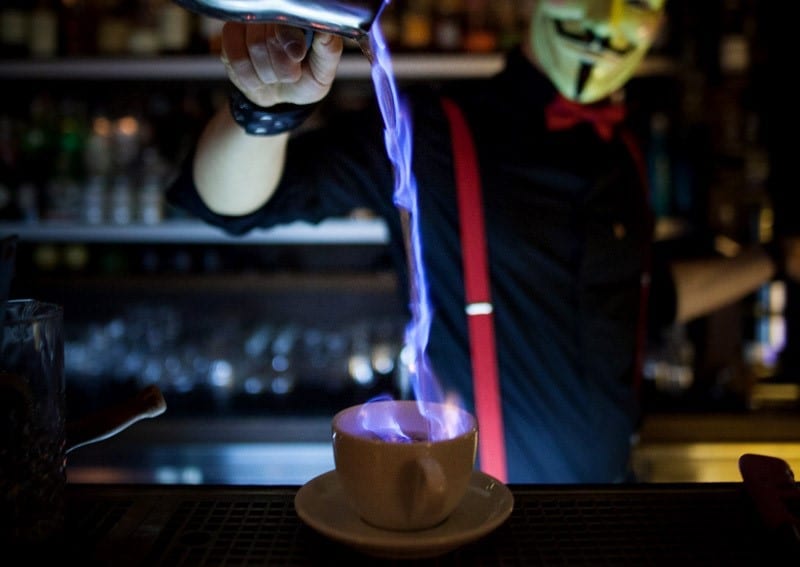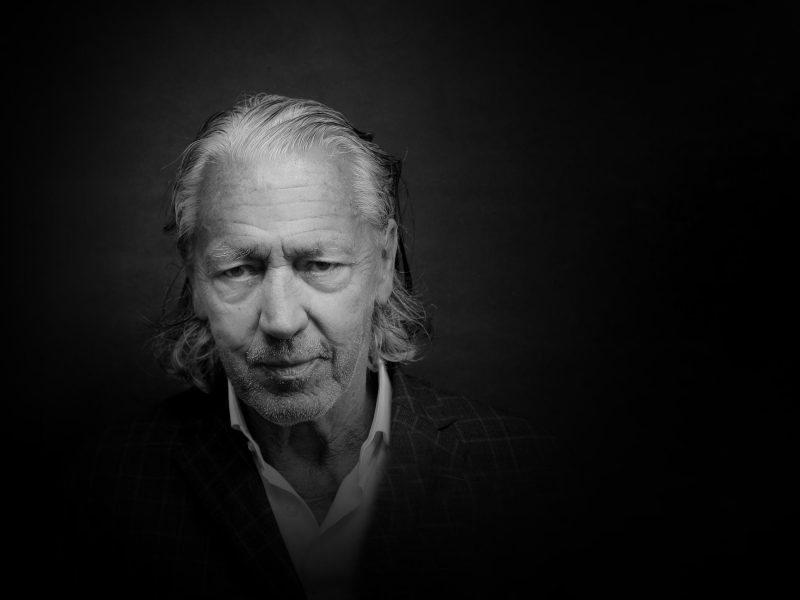Some Like It Hot: The Origins of Warm Cocktails
Every year, winter brings us the same familiar concoctions, from hot toddies to mulled wine. The recipes are easy to find, whether online or on the kitchen shelf, but their history can be easily forgotten. We look at the origins of some of the best known hot drinks and talk to bartenders about the future of these often overlooked beverages.
If there’s a sure-fire sign of winter, besides the cold, it’s the hot drink recipes which crowd into magazines and websites at this time of year, like chilly travellers around a fireplace. It makes sense – what other time of year would you want a hot beverage? Although they’re associated with the season, the most popular hot drinks have strong ties to particular places, too. After all, nothing says German Christmas like Glühwein, and the flair of a Blue Blazer is unmistakeably American. In fact, the history of hot drinks is much more a question of ‘where’ than ‘when’.
It All Begins With Wine
Just like a warming fire, many of the oldest hot drinks are to be enjoyed communally. Mulled wines like Glühwein were being made as far back as Roman times. With the spread of the Roman Empire, recipes varied from place to place, but the basic combination of red wine, spices, citrus, and sugar, heated in a large bowl was the starting point. The drink even remained popular enough to make an appearance in a medieval cookbook from the 14th century.
By the 18th century, the English had embraced the experimental possibilities of mulled wine. They’d developed a whole range of hot drinks known as the ecclesiastics. With names like Smoking Bishop and Smoking Cardinal, they were a light-hearted dig at a favourite target of the English: Catholics. Each drink used a different style of wine as its base. The more expensive the wine, the further up the Church hierarchy the name went. Smoking Pope used the highly taxed, and therefore costly, burgundy. Smoking Bishop was made using more common port, steeped with bitter oranges, sugar, cinnamon, cloves and other spices.
The ecclesiastics fell out of fashion during the 19th century and are yet to make a comeback. Smoking Bishop was saved from total obscurity by Charles Dickens’s A Christmas Carol (1843). When Scrooge resolves to improve the treatment of his employee, Bob Cratchit, he declares they will “discuss your affairs this very afternoon, over a Christmas bowl of Smoking Bishop, Bob.”
It’s no surprise Dickens worked Smoking Bishop into his story. According to David Wondrich, author of Punch: The Delights (and Dangers) of the Flowing Bowl, Dickens was a devotee of mulled wine and its cousin, punch. Even in his day, bowls of Smoking Bishop or punch were seen as an old fashioned addition to a party, which was exactly why Dickens served them. “He liked to collect all the old customs and habits of old England,” says Wondrich in one interview. In fact, Dickens was such a fan of warm mixed drinks he even created his own brandy rum punch, designed to be set alight before being served.
The Simplicity of the Toddy
While the well-to-do English were warming up basins of booze, Americans were consuming increasing numbers of toddies. The mixture of a spirit with sugar and boiling water is such a basic formula, it’s difficult to tell where the hot toddy was first made. As with many proto-cocktails, the hot toddy was originally made using whatever spirit the drinker preferred, from rum to gin. Everything about hot toddies was ad-hoc, even the quantity. The earliest published toddy recipe Wondrich has found dates from 1801 and “makes a hefty quart of the stuff.” Wondrich thinks that recipe could easily have been designed for individual consumption. Americans back then were taking toddies like cold-pressed lattes. As early as 1785, Wondrich tells us one doctor implored citizens to take care by “measuring the spirit and water” in a toddy carefully and “drinking it only with their meals.” Nowadays, it’s hard to imagine making a hot toddy with something other than Scotch or Irish whiskey. But it wasn’t until late in the 19th century in America that Scotch beat out the other contenders and the hot toddy gained another name – Hot Scotch.
In Europe, the hot toddy made with rum survived under the name grog – a word which has come to mean many things in many different places. To sailors in the British Navy, grog was a mixture of rum and water rationed out to them each day while at sea. For obvious reasons, this grog wasn’t served hot, and this is typically still the case in UK bars. The practice spread to Australia and New Zealand, where grog has come to be a generic word for any alcohol. In France and Belgium, hot grog made with black tea, rum, honey, and lemon is a traditional treatment for a cold. But in Germany, Switzerland, and Austria, grog is simply a hot toddy made with rum and sometimes flavoured with lemon or spices.
The Future of Hot Drinks
I could go on. Hot drinks have a history much longer than this article can hold – much longer than their future in some parts of the world. Despite their cultural heritage, hot drinks are not such popular orders in modern bars. Venues might offer a seasonal mulled wine at Christmas, but traditional hot drinks rarely make an appearance on a menu. That word ‘traditional’ might explain why.
All these recipes reach back beyond the golden age of cocktails in the late 19th century. Even back then, some like Smoking Bishop were seen as outdated. These drinks don’t require special ingredients, tools, or skills to make. In that sense, they’re pre-bartender. Anyone can make them at home. In fact, it’s telling that the most popular hot drink invented in Jerry Thomas’s time was the Blue Blazer – pouring burning alcohol between two cups is something people would much rather pay someone to do for them. In comparison, traditional hot drinks aren’t so impressive. They’re not difficult to get right and they’re so ordinary, they don’t seem exotic. They’re just part of the cultural furniture. They get taken for granted, and when people think about them at all, these drinks tend to be considered boring.
But Filip Stránský of Anonymous Bar in Prague says that isn’t true everywhere. “Every country has a different taste palate…and different mentality,” he says. In London, Salvatore Calabrese agrees, “the popularity varies because some countries have a stronger tradition of drinking hot drinks.” After more than 40 years behind bars around the world, Calabrese ought to know. Though hot drinks may be hard to find on bar menus in Berlin, Stránský says in Prague, they’re particularly popular, and not just in winter. “In the hot summer days, a hot cocktail is great to even out the body temperature.” Ondřej Hnilička from Bar Hemingway agrees hot drinks are a popular choice in Prague, but usually “as the first drink – to warm up a bit.” He says that few people “stay with warm cocktails throughout the whole evening.”
Hnilička has a point. Unlike their cold cousins, which can be ordered all night, hot drinks tend to affect you faster, meaning you can’t have as many if you want to remain upright. And even lovers of coffee and tea don’t usually drink one cup after another in a short time. Perhaps this is partly why they’ve fallen out of favour in other places.
Hot Tips for Hot Drinks
Unsurprisingly, the two Prague bartenders say their favourite way to heat a drink is to light it on fire. “When we have enough time during the evening, we love to prepare a hot drink in the Blue Blazer style,” says Hnilička. Meanwhile, at Anonymous Bar, Stránský says using a vacuum coffee pot is a great way to heat a drink and infuse it with flavour. But he just can’t go past the classic Blue Blazer approach. Anonymous Bar has its own signature version of this classic – the Thomas Fawkes Blazer. “This cocktail is so popular that, to speed up the preparation process, we use pre-mix,” Stránský explains, “this pre-batched cocktail base is prepared by us every day fresh before we open.”
In fact, most hot cocktails are ideal for preparation in batches. In December, Hemingway Bar offered a Christmas Hot Punch Cocktail, which Hnilička says was very successful. Calabrese says he likes to keep bottles of batched hot drinks in a bain-marie to keep their temperature steady. And in Berlin, Benjamin Fischer manufactures Berliner Winter, a mixture of vodka, cloudy apple juice, and spices, which is sold in bottles throughout Germany and Austria. It’s a cocktail people heat up themselves. Leaving such a critical step in the hands of the customer sounds risky, but Fischer isn’t worried. “People usually know how to heat a drink,” he says. At worst, someone “might just accidentally boil the drink, then the alcohol disappears faster.”
In a way, Berliner Winter brings hot drinks full circle. They began as simple homemade recipes served in cold weather, then moved into the bar as cocktails became the order of the day. But there was always something domestic about these drinks. Letting people heat up the drink at home may be the key to Berliner Winter’s success.
Hot drinks may never be more than a seasonal curiosity for many drinkers, but if bartenders like these keep experimenting, they certainly won’t disappear. And the next time you see a hot cocktail on a menu, order it. If not for yourself, then do it for all those of us who aren’t lucky enough to be in a place with such a rich alcoholic tradition.
Credits
Foto: Photo via Anna Postnikova






